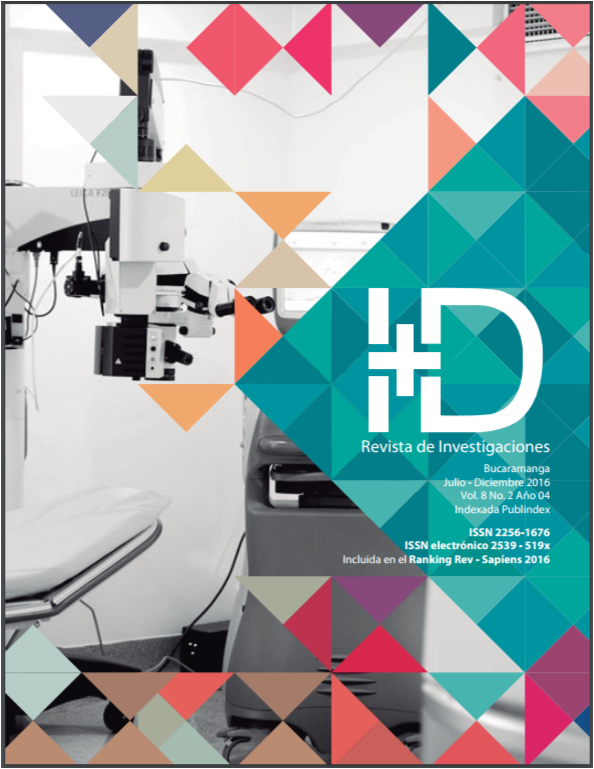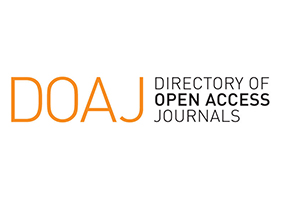Comportamiento y experiencia de consumo desde la interconexión e interactividad de la World Wide Web: un recorrido teórico
DOI:
https://doi.org/10.33304/revinv.v08n2-2016004Palabras clave:
Web 3.0, Redes sociales, Análisis de comportamiento, Ciencia cognitiva, Inteligencia artificialResumen
La evolución de la World Wide Web ha generado una mayor interconexión entre usuarios propiciando el análisis de su comportamiento a partir del tipo de interacción y desarrollando un mundo en línea homólogo al que no lo está (off line), que reta a las empresas a intensificar las experiencias de consumo y atraer la atención de los consumidores. Para indagar sobre los principales aportes y cambios en la forma de relacionarse socialmente desde la web, el artículo hace un recorrido teórico en el que se evidencia que el acceso a data implica un reto para las empresas que buscan comprender a fondo lo que realmente quieren sus clientes y las posibles formas de retenerlos, para vincularlos con el valor de la marca mediante canales de comunicación que rompan lo tradicional.Descargas
Citas
Atzori, L., Iera, A., & Morabito, G. (2010). The internet of things: A survey. Computer networks, 54(15), 2787-2805. Balahur, A. (2013). Sentiment analysis in social media texts. In 4th workshop on Computational Approaches to Subjectivity, Sentiment and Social Media Analysis, pp.120-128.
Bamman, D., Eisenstein, J., & Schnoebelen, T. (2014). Gender identity and lexical variation in social media. Journal of Sociolinguistics, 18(2), 135-160.
Bergman, S. M., Fearrington, M. E., Davenport, S. W., & Bergman, J. Z. (2011). Millennials, narcissism, and social networking: What narcissists do on social networking sites and why. Personality and Individual Differences, 50(5), 706-711.
Berthon, P. R., Pitt, L. F., Plangger, K., & Shapiro, D. (2012). Marketing meets Web 2.0, social media, and creative consumers: Implications for international marketing strategy. Business horizons, 55(3), 261-271.
Bitzer, S., Park, H., Blankenburg, F., & Kiebel, S. J. (2014). Perceptual decision making: drift-diffusion model is equivalent to a Bayesian model. Frontiers in human neuroscience, 8(102), 1- 17.
Blattberg, R. C., Kim, BD., & Neslin, S. A. (2008). Database Marketing -
Analizing and Managing Customers. New York, NY (USA): Springer.
Bond, R. M., Fariss, C. J., Jones, J. J., Kramer, A. D., Marlow, C., Settle, J. E., & Fowler, J. H. (2012). A 61-million-person experiment in social influence and political mobilization. Nature, 489(7415), 295-298.
Brin, S., & Page, L. (2012). Reprint of: The anatomy of a large-scale hypertextual web search engine. Computer networks, 56(18), 3825-3833.
Burt, R. S., Kilduff, M., & Tasselli, S. (2013). Social network analysis: Foundations and frontiers on advantage. Annual review of psychology, 64, 527-547.
Centola, D., & Macy, M. (2007). Complex contagions and the weakness of long ties1. American journal of Sociology, 113(3), 702-734.
Christakis, N. A., & Fowler, J. H. (2013). Social contagion theory: examining dynamic social networks and human behavior. Statistics in medicine, 32(4), 556-577.
De Choudhury, M., Counts, S., & Horvitz, E. (2013). Predicting postpartum changes in emotion and behavior via social media. Proceedings of the SIGCHI Conference on Human Factors in Computing Systems. Abril, pp. 3267- 3276.
Deighton, J., & Kornfeld, L. (2010). United Breaks Guitars. Harvard Business School Publishing, 1-13.
Djamasbi, S., Siegel, M., & Tullis, T. (2010). Generation Y, web design, and eye tracking. International Journal of Human-Computer Studies, 68(5), 307-323.
Facebook Newsroom (2013). Feature Phone Milestone: Facebook for Every Phone Reaches 100 Million. Recuperado de: https://newsroom.fb.com/news/2013/07/feature-phone-milestone-facebook-for-every-phone-reaches-100-million/
Facebook Newsroom (2014). A New, Optional Way to Share and Discover Music, TV and Movies. Recuperado de: https://newsroom.fb.com/news/2014/05/a-new-optional-way-to-share-and-discover-music-tv-and-movies/
Falk, E. B., Morelli, S. A., Welborn, B. L., Dambacher, K., & Lieberman, M. D. (2013). Creating Buzz The Neural Correlates of Effective Message Propagation. Psychological Science, 24(7), 1234-1242.
Fang, X., Hu, P. J. H., Li, Z., & Tsai, W. (2013). Predicting adoption probabilities in social networks. Information Systems Research, 24(1), 128-145.
Fischer, E., & Reuber, A. R. (2011). Social interaction via new social media: (How) can interactions on Twitter affect effectual thinking and behavior?. Journal of business venturing, 26(1), 1-18.
Gupta, S., Armstrong, K., & Clayton, Z. (2011). Social Media. Harvard Business School Press, 1 -14.
Hall, W., & Tiropanis, T. (2012). Web evolution and Web science. Computer Networks, 56(18), 3859-3865.
Haller, S., Karnouskos, S., & Schroth, C. (2008). The internet of things in an enterprise context. Vienna: Springer Berlin Heidelberg.
Houghton, D., Joinson, A., Caldwell, N., & Marder, B. (2013). Tagger’s delight? Disclosure and liking in Facebook: the effects of sharing photographs amongst multiple known social circles. Birmingham Business School: Discussion Paper Series.
Hughes, D. J., Rowe, M., Batey, M., & Lee, A. (2012). A tale of two sites: Twitter vs. Facebook and the personality predictors of social media usage. Computers in Human Behavior, 28(2), 561-569.
Jeremić, Z., Jovanović, J., & Gašević, D. (2013). Personal learning environments on the social semantic web. Semantic Web, 4(1), 23-51.
Kaplan, A. M., & Haenlein, M. (2010). Users of the world, unite! The challenges and opportunities of Social Media. Business horizons, 53(1), 59-68.
Khan, F. H., Bashir, S., & Qamar, U. (2014). TOM: Twitter opinion mining framework using hybrid classifcation scheme. Decision Support Systems, 57, 245-257.
Kietzmann, J. H., Hermkens, K., McCarthy, I. P., & Silvestre, B. S. (2011). Social media? Get serious! Understanding the functional building blocks of social media. Business horizons, 54(3), 241-251.
Kurilovas, E., Kubilinskiene, S., & Dagiene, V. (2014). Web 3.0–Based personalisation of learning objects in virtual learning environments. Computers in Human Behavior, 30, 654-662
Lamandini, A. (2011). Semantic Web. Ricerche di Pedagogia e Didattica. Journal of Theories and Research in Education, 6(1).
Lin, K. Y., & Lu, H. P. (2011). Why people use social networking sites: An empirical study integrating network externalities and motivation theory. Computers in Human Behavior, 27(3), 1152-1161.
Lo, J. J., Chan, Y. C., & Yeh, S. W. (2012). Designing an adaptive web-based learning system based on students’ cognitive styles identifed online. Computers & Education, 58(1), 209-222.
Michaelidou, N., Siamagka, N. T., & Christodoulides, G. (2011). Usage, barriers and measurement of social media marketing: An exploratory investigation of small and medium B2B brands. Industrial Marketing Management, 40(7), 1153-1159.
Ministerio de Tecnologías de la Información y las Comunicaciones de Colombia. (2014). 8 de cada 10 colombianos están usando Internet. Recuperado de: http://www.mintic.gov.co/portal/604/w3-article-1629.html
Nahar, K. (2012). Artifcial Neural Network. COMPUSOFT,
An international journal of advanced computer technology, 1(2) 25-27.
Oh, H. J., Ozkaya, E., & LaRose, R. (2014). How does online social networking enhance life satisfaction? The relationships among online supportive interaction, affect, perceived social support, sense of community, and life satisfaction. Computers in Human Behavior, 30, 69-78.
Pan, B., Hembrooke, H. A., Gay, G. K., Granka, L. A., Feusner, M. K., & Newman, J. K. (2004). The determinants of web page viewing behavior: an eye-tracking study. In Proceedings of the 2004 symposium on Eye tracking research & applications (pp. 147-154).
Petz, G., Karpowicz, M., Fürschuß, H., Auinger, A., Stříteský, V., & Holzinger, A. (2014). Computational approaches for mining user’s opinions on the Web 2.0. Information Processing & Management, 50(6), 899-908.
Petz, G., Karpowicz, M., Fürschuß, H., Auinger, A., Stříteský, V., & Holzinger, A. (2015). Reprint of: Computational approaches for mining user’s opinions on the Web 2.0. Information Processing & Management, 51(4), 510-519.
Qin, X., & Gu, Y. (2011). Data fusion in the Internet of Things. Procedia Engineering, 15, 3023-3026.
Rahwan, I., Zablith, F., & Reed, C. (2007). Laying the foundations for a world wide argument web. Artifcial intelligence, 171(10), 897-921.
Rodríguez, D. (2013). Memecracia: Los virales que nos gobiernan. Cómo las ideas contagiosas usan internet para manipular tu mente. Barcelona: Grupo Planeta Spain.
Schneider, J., Groza, T., & Passant, A. (2013). A review of argumentation for the social semantic web. Semantic Web, 4(2), 159-218.
Schoen, H., Gayo-Avello, D., Takis Metaxas, P., Mustafaraj,
E., Strohmaier, M., & Gloor, P. (2013). The power of prediction with social media. Internet Research, 23(5), 528-543.
Sen, R. (2005). Optimal search engine marketing strategy. International Journal of Electronic Commerce, 10(1), 9-25.
Senft, T. M., & Baym, N. K. (2015). Selfes Introduction~
What Does the Selfe Say? Investigating a Global Phenomenon. International Journal of Communication, 9, (19), 1588- 1606.
Simonite, T. (2015). Teaching Machines to Understand Us, MIT Technology Review. Recuperado de https://www.technologyreview.com/s/540001/teaching-machines-to-understand-us/
Smith, A. N., Fischer, E., & Yongjian, C. (2012). How does
brand-related user-generated content differ across YouTube, Facebook, and Twitter? Journal of Interactive Marketing, 26(2), 102-113.
Smith, J. R., Terry, D. J., Manstead, A. S., Louis, W. R., Kotterman, D., & Wolfs, J. (2008). The attitude–behavior relationship in consumer conduct: The role of norms, past behavior, and self-identity. The Journal of Social Psychology, 148(3), 311-334.
Stieglitz, S., & Dang-Xuan, L. (2013). Emotions and information diffusion in social media—sentiment of microblogs and sharing behavior. Journal of Management Information Systems, 29(4), 217-248.
Summerfeld, C., & de Lange, F. P. (2014). Expectation in perceptual decision making: neural and computational mechanisms. Nature Reviews Neuroscience,15(11), 745-756.
Think with google, (2015, a). 4 New Moments Every Marketer Should Know. Recuperado de: https://think.storage.googleapis.com/docs/4-new-moments-every-marketer-should-know.pdf
Think with google (2015, b). Cooking Trends Among Millennials: Welcome to the Digital Kitchen. Recuperado de: https://www.thinkwithgoogle.com/articles/cooking-trends-among-millennials.html
Vidal, L., Ares, G., Machín, L., & Jaeger, S. R. (2015). Using
Twitter data for food-related consumer research: A case
study on “what people say when tweeting about different eating situations”. Food Quality and Preference, 45, 58-69.
Vincent, B. T. (2015). Bayesian accounts of covert selective attention: A tutorial review. Attention, Perception, & Psychophysics, 77(4), 1013-1032.
Wilson, R. F., & Pettijohn, J. B. (2008). Search engine optimisation: A primer on outsourcing key tasks. Journal of Direct, Data and Digital Marketing Practice, 10(2), 133-149.
Xu, X., Chen, T., & Minami, M. (2012). Intelligent fault prediction system based on internet of things. Computers & Mathematics with Applications, 64(5), 833-839.
Yang, S., & Ghose, A. (2010). Analyzing the relationship between organic and sponsored search advertising: Positive, negative, or zero interdependence? Marketing Science, 29(4), 602-623.
Zuze, H., & Weideman, M. (2013). Keyword stufng and the big three search engines. Online Information Review, 37(2), 268-286.











